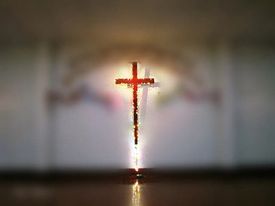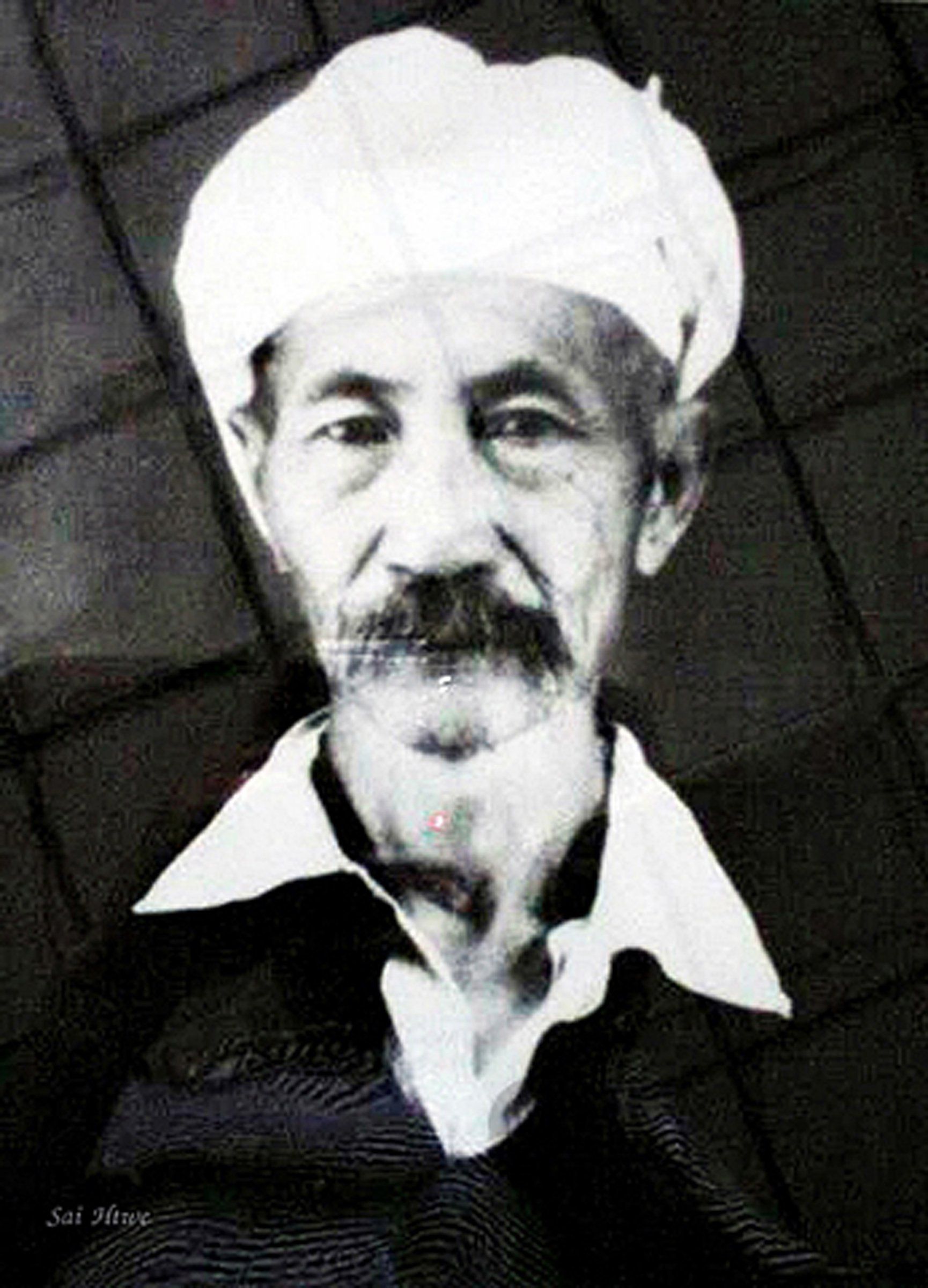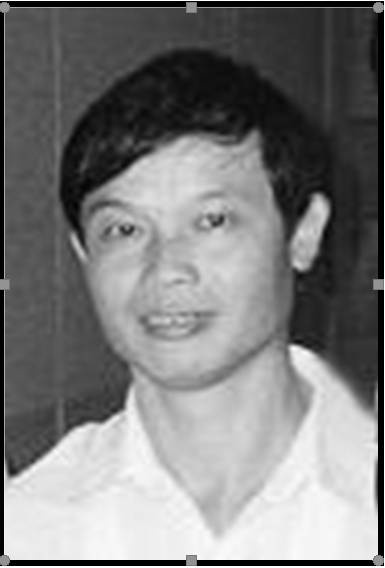Josiah Nelson Cushing
Cushing was born in North Attleboro, Massachusetts, U.S.A, May 4, 1840. He was the son of Alpheus Nelson and Charlotte E. Foster Cushing. He was prepared for college at the Pierce Academy, Middleboro, Massachusetts, and entered Brown University in the class of 1862 in the same class with Dr. Henry F. Colby of Dayton, Ohio, Rev. Addison Parker of Piqua, Ohio, and Dr. Josiah R. Goddard of Ningpo, China. After his graduation he went directly to Newton Theological Institution completing the full course. Among his classmates were Dr. Luther G. Barrett, the president of Jackson College, Jackson, Mississippi, and Dr. Alonzo Bunker who also gave his life to missionary service and was a successful missionary to the Karen at Toungoo and Loikaw, Burma, for forty years, laboring in the same country with Cushing and for the same period of time. As to many another students the obtaining of an education was, to young Cushing, a financial struggle. But he was dominated by a great purpose and no obstacle was permitted to change or hinder it. In the Theological Seminary he was remembered as a student of delightful spirit of gentlemanly deportment of far more than average intellectual ability and of complete consecration to the work to which he believed God had called him. Here was exhibited, as also in college his remarkable linguistic ability was ripened the definite purpose which rule his life to make known the gladtidings of Christ’s salvation to the heathen world. The year before he completed his college course he united by letter with the First Baptist Church in Providence. After completing his Seminary course he was ordained to the Christian ministry by the same Church in 1865, and in its fellowship he died, though for a brief period, he transferred his membership to the English speaking Church in Rangoon, of which for a time he filled the pastoral office in addition to his other duties.
In 1865 he offered himself to the American Baptist Missionary Union as a candidate for the foreign field and was presented at the annual meeting held that year in St. Louis, as a missionary under appointment in the same city. He was retained at the Seminary as instructor in the Hebrew department for one year and in 1866 and he sailed for Burma as being designated to the Shan tribes to take up a work which had been recently begun by Rev. Moses Homan Bixby but which he had been compelled to lay down by reason of failing health. These tribes were as yet little known and in large part un-reached by missionary operations. Cushing entered courageously into the difficult and dangerous task of visiting the people in their homes and carrying to them the knowledge of the Christian religion, with Toungoo as his headquarters, extending his tours farther and farther into the wild and untraversed country inhabited by these people.
Cushing studied the country and the people, their customs and mode of life as well as their language. The knowledge thus gained, geographical and racial was of great value to the English government, as it gratefully acknowledged. For ten years he continued this work of exploration and personal evangelization by frequent and extended tours from Toungoo, and then for three years he stationed himself at Bhamo, four hundred miles further into the northeastern interior, beyond the utmost reach of civilization, and in the very center of the people whom he was seeking to enlighten and elevate.
But God had a special and important work, which he was particularly fitted by natural endowment and intellectual attainments to undertake, and for which his intimate acquaintance with the people had been preparing him....He gave himself to the task of compiling a Shan dictionary, which he accomplished with immense labor. His residence was then changed to Rangoon, where he could have the needed assistance of the printing press. In 1880 he published an “Elementary Handbook of the Shan Language,” and also a “Grammatical Sketch of the Kachin Language,” an allied language. The “Elementary Handbook” went to a second edition in 1888. The completed “Shan and English Dictionary” was issued in1881. His next great work, that had all the while been in his mind and in gradual preparation, was the translation of the sacred Scriptures into the Shan tongue .For this he was eminently qualified by his accurate knowledge of the Greek and Hebrew languages, and his linguistic genius. Upon it he spent many years of careful and conscientious study, publishing the word of God, book by book, first the New Testament and then the Old. The New Testament first appeared in 1882, and passing to a second edition in 1887, and to a third edition in 1903, at which time the whole Bible was ready to be put in the hands of the people, revised and perfected by himself. The Old Testament translation first appeared in 1891. This great achievement will stand as Cushing’s imperishable monument, and places his name side by side with the names of Carey, Judson, Brown, and other translators of the word of God. He also prepared a Shan hymnbook and began the preparation of a literature for the people.
He had reached America, in the early summer of 1905, and hastened to attend the annual meetings of the Baptist Missionary Societies, which occur in May. There having received the happy greetings of his admiring friends, and looked once more into the faces of those who were fellow-workers with him and with God in the extension of his kingdom in the world, at the close of one of the public meetings on May 17, on the floor of the Church where the meeting was held, he fell unconscious, and quickly breathed his last. In an instant of time without warning, his spirit was translated into the presence of Him whom he had served with lifelong and conspicuous devotion, and into the undimmed light of the knowledge of the glory of God, which he had labored to disseminate in the dark places of the earth.
Cushing loved jungle life. He said, “Jungle life is what I wanted: my illness, although aptly the after-effect of fever, was mainly due to being cooped up for months at indoor work.”[1]
Cushing was good organizer. Mr. Hallett said, “I never met a more methodical man than Cushing. His arrangements were admirable. Everything was kept in its place.”[2] Cushing’s power as an organizer became apparent. The baggage had been stacked into six loads, two smaller than the others for the elephants, which were to be ridden by us”, acclaimed by Holt S. Hallett.[3] Mr. Hallett said, “whilst we were breakfasting Dr. M’Gilvary noticed mat small spots had broken out on Cushing’s hands. On his examining them, he said that there could be no doubt that they were smallpox. Cushing said that he had fever, coming out for two days, and he was afraid that it might be the case. On calling the Shan interpreters they at once agreed with M’Gilvary and we accordingly made arrangements as far as possible to cut off the chance of contagion from the remainder of the party. The two interpreters and Cushing’sservant, as well as the elephant-men, had suffered from the disease, wethere fore put aside cutlery, crockery, cooking utensils, etc, for the invalid arranged that the interpreters and his boy should wait solely upon him, gave up the rest-house to them, had a temporary shelter made for ourselves and halted for the night instead of making an afternoon journey.”[4] “I was glad to hear on my return to Zimme (Chiangmai) that Cushing had so far recovered as to have been able to leave for Bangkok on April 30th. The thoughtful kindness of this missionary intaking over from me the management of the commissariat and camp arrangements during our journeys together with his skill in keeping the loads of each elephant separate and having only such things unpacked as were immediately required enabled me to start by daybreak every morning (except when we were delayed by the carelessness of the elephant-drivers, who occasionally allowed their animals to stray) and I was thus able to make longer journeys and do more work than I could otherwise have done. I trust that the knowledge he was able to collect of the various dialects of the Shan language and the information he gained about the customs and habits of the Ping Shan will be a full recompense to him for the constant and enthusiastic manner in which he took up those matters. It is only by acquiring a thorough knowledge of the languages, habits, customs, and superstitions of the people that missionaries can hope to influence and convert them. The noble work that Cushing has done in translating the Bible into Shan will greatly aid his fellow-missionaries in Christianizing and civilizing not only the Shan but also the neighboring tribes who understand their language. The greatest field for missionaries in Indo-China lies, undoubtedly, among the non-Buddhist hill-tribes where so much good work has already been done by the American Baptist, the American Presbyterian and China Inland Missions.”[5]
Ellen Winsor (Mrs. Cushing)
Ellen Winsor grew up in Boston and became as schoolteacher there. When she was 21, she went to Beaufort, SC, to start a school for former slaves. In addition, she started an orphanage and superintended Pope’s Plantation on St. Helena’s Island. She married one of the other volunteers, but less than two years later, the ship on which he was returning to Beaufort from New York was wrecked and he was lost.
Ellen went home to Boston and became the Director of The Home for Little Wanderers, an orphanage. At nearby Newton Theological School was Josiah Nelson Cushing, actively seeking a wife in order to qualify as a missionary to Burma under the American Baptist Foreign Mission Society. He and Ellen found each other and were married on her 26th birthday. The Cushings went to Burma as missionaries to the Shan, a displaced people. Josiah was a preacher, scholar, explorer, translator, and educator. While her husband worked in one part of the country, Ellen often worked in another. Although Josiah was recognized as the leading Shan language scholar in the world, one of the first pieces they published was a tract, which Ellen translated into the Shan language. Today, there is a Cushing Hall named for them at the headquarters of the Burma Baptist Convention in Rangoon.
When the Cushings’ son was ready to enter Penn Charter School in Philadelphia, Ellen Cushing left Burma and became a field secretary of the Women’s Baptist Foreign Mission Society of Pennsylvania. A project of the Society was to start a training school for women who felt called to enter church vocations. For seven years, she stumped the state, trying to transform the dream into reality. In the summer of 1892, she met three young women who said they wanted to attend such a school. She told them to plan on coming, for there would be a school ready for them. Then she went back to the Society and told them they would have to get a school ready, they did, and Ellen Cushing became its first preceptress. [6]





